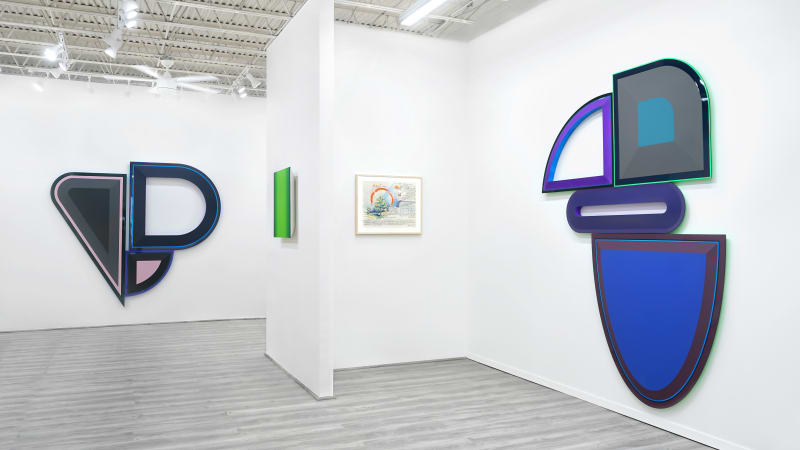The idea of both series is essentially the same: to pull hues off the canvas and float them in midair. Most of the drawings are for “rainbow trees” that would curve colored light around a tree’s crown, outlining the foliage in space. Among the two-sided pyramids are ones that are merely translucent shapes, two daubed with soft abstract pigment and one whose joint holds a single vertical red line. It’s not as vivid as a laser, but that seemingly disembodied red slash exemplifies Krebs’s ambition to take color-field painting beyond painting.
The technological aspect of Beverly Fishman’s recent sculptural paintings is expressed by their precisely cut shapes and glossy urethane-paint finishes. Assembled from sleekly contoured pieces, the Detroit artist’s pictures look a bit like distilled cityscapes. Their subtitles, however, reveal a very different inspiration: pharmaceutical packaging. To describe one piece, Fishman lists the medical conditions “pain, opioid addiction, bipolar disorder, muscle spasms.” Her flawlessly made artworks refer, however obliquely, to human frailty.
Ruth Pastine’s glimmering paintings are closer to the pictures that impressed Krebs when he moved to D.C. five decades ago. Each features gradations of a single rich color, with the lightest region near the center. There’s nothing especially technological about the California artist’s pictures, which are painted with oils on canvases whose beveled edges suggest infinity pools. Yet Pastine’s assured technique yields colors that glow like lasers.
READ ON THE WASHINGTON POST




